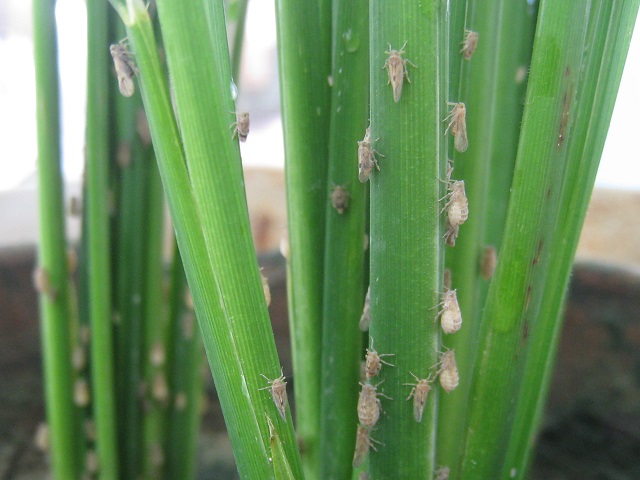
With the increasing reports of brown planthopper (BPH) cases, an expert from the Department of Agriculture-Philippine Rice Research Institute (DA-PhilRice) urges farmers to check first the insect population before implementing control measures.
BPH is a small brown insect found mainly on the base of rice plants above the water level. Adults and nymphs suck the plant sap from leaf sheaths, causing yellowing of lower and then upper leaves. Whole areas can die in patches, which are said to be affected by “hopper burn”. It can cause total yield loss when its attack is severe.
“Count the number of adults and nymphs in 10 hills across a plot to determine severity of BPH infestation. Visually count in tillers or tap the hills three times for BPH to fall into the water. One or more BPH per tiller or 30 per hill means the population is high and there’s a need for management actions,” Leonardo V. Marquez, pest management expert, explained.
He said that before resorting to chemical use, it is important to consider other ways to control the BPH population.
If there is already an infestation, Marquez recommended draining water completely from the field for a week and then irrigating when necessary.
“Chemical application may be tempting because it is readily available and has immediate effect, but it can cause an outbreak because beneficial insects that prey on BPH will also be killed,” Marquez stressed.
He stressed that it is always better to prevent occurrences than manage BPH during outbreaks.
“Use resistant varieties. Some BPH-resistant varieties are PSB Rc 2, 10, NSIC Rc 212, Rc 222, Rc 224, Rc 226, Rc 298, and Rc 300. Transplant at 20cmx20cm planting distance with 2-3 seedlings per hill; practice alternate wetting and drying; use 90kg nitrogen/ha during wet season and 120kg/ha during dry season; and split fertilizer into three applications,” he said.
He added that farmers should also let the soil rest for a month, remove weeds from dikes where pests may thrive, plow and dry soil after harvest, and monitor the rice field regularly.
“Diversifying plants in the rice field will also be helpful. Plant vegetables and flowering plants. They serve as shelter for beneficial organisms such as ground beetle, lady beetle, damselfly, and dragonfly; and nectar of flowers serves as food for parasitic wasps. These organisms prey on brown planthoppers and other pests,” Marquez said.
If it is too late to use other management ways, he said that farmers may opt to use insecticides.
“If you’ve decided to use chemicals, use insecticides with contact or stomach active ingredient to bring down the population of adult BPH and use insecticide with growth regulator active ingredient to control BPH nymphs. Always use proper personal protective equipment during mixing and spraying of insecticide,” he said.
Chemical use when the rice crop is younger than 40 days after seeding or 30 days after transplanting is not advisable because damages caused by insects at this stage is not significant according to him.
He emphasized that once farmers started spraying pesticides, the beneficial insects will be killed, which means follow-up insecticide applications are needed to take care of the crops from pests.




